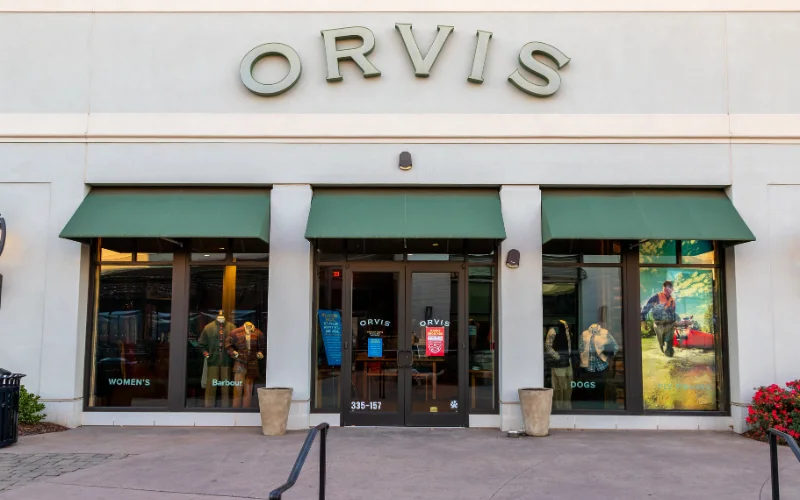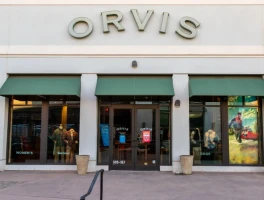When a company with a 170-year history makes a move, the tremors are worth analyzing. Orvis, the Vermont-based institution synonymous with fly fishing and the rugged gentleman aesthetic, announced it will be shuttering 36 retail locations by early 2026. That’s a significant number—about half its fleet, or to be more exact, 36 of its 71 U.S. brick-and-mortar spots.
The official narrative, delivered by President Simon Perkins, points to a clear villain: the "unprecedented tariff landscape." It’s a clean, simple explanation. Tariffs on overseas goods increase costs, squeeze margins, and force difficult decisions. Many retailers have sung this song, and for good reason. It’s a legitimate headwind.
But when you dig into the sequence of events at Orvis over the past 24 months, the tariff explanation starts to feel less like the root cause and more like a convenient accelerant for a much deeper, internal reckoning. This isn’t just a story about tariffs. This is a story about a brand’s identity crisis, a costly strategic pivot, and a painful, public retreat back to its roots.
A Pattern of Contraction
Let’s look at the data points leading up to this mass closure. This decision didn't happen in a vacuum. It’s the culmination of a steady, prolonged contraction. In late 2024, the company laid off 112 employees, or about 8% of its workforce. In June 2025, another 50 jobs were cut. These weren’t minor trims; they were significant reductions in force.
Alongside the workforce cuts came the dismantling of institutional pillars. Orvis ceased printing its iconic 170-year-old mail-order catalog, a move that must have been agonizing for a brand that claims to be the oldest mail-order retailer in the country. Then, its sprawling 351-acre headquarters in Sunderland, Vermont, was put up for sale. A company doesn't sell the family farm unless the financial pressure is immense.
And this is where the official statement, from my perspective, begins to fray. Blaming a sudden tariff shock for a series of deep, structural cuts that have been happening for years feels like misdirection. Tariffs certainly didn't help, but these moves smell of something more fundamental. They are the actions of a company that has realized its current model is unsustainable and is now shedding weight at a frantic pace to stay afloat. The question isn't whether tariffs hurt Orvis; the question is, what underlying condition made the company so vulnerable to that injury in the first place?

The Retreat from 'Lifestyle'
The answer seems to be buried in the second half of Perkins's statement—the part about "returning to our roots and sharpening our focus on the pursuits at the heart of our heritage: fly fishing and wingshooting." This isn't just corporate boilerplate. It's a tacit admission of a strategic error.
For years, Orvis has been on a journey of brand extension. It pushed far beyond its core of high-end `orvis fly rods` and waxed cotton `orvis jackets`. The company dove headfirst into the crowded and cutthroat "lifestyle" market. Suddenly, an `orvis store` was filled not just with gear for a weekend on the Battenkill River, but also with casual `orvis shirts`, home furnishings, and a dizzying array of `orvis dog beds`. It was a logical move on paper: leverage a respected heritage brand to capture a larger share of the consumer's wallet.
But in doing so, Orvis diluted its unique selling proposition. It began competing not with Hardy and Sage, but with J.Crew, L.L. Bean, and a thousand other direct-to-consumer brands. This strategic pivot is like a world-class heart surgeon deciding to open a general wellness clinic; the expertise is still there, but it’s buried under a mountain of services that others do just as well, and often for less. The "unprecedented tariff landscape" likely hit these lower-margin, mass-market lifestyle goods (the `orvis pants` and sweaters made overseas) far harder than the high-end `orvis fly fishing` gear still crafted in Vermont.
Imagine walking into one of those closing stores today. You can almost smell the tension—the scent of leather and cedar from the gun department clashing with the sight of bright red "Last Release" signs on racks of discounted `orvis clothing`. It’s the physical remnant of a failed experiment. The closures, then, are not just a cost-cutting measure. They are an amputation, a deliberate removal of the brand's overextended limbs to save the core. How much capital was poured into this lifestyle expansion, and what was the actual return on that investment? Those are the numbers we'll never see, but the scale of this retreat speaks volumes.
The Narrative Doesn't Square
When you plot the timeline and connect the data points, the story Orvis is telling publicly doesn’t fully align with the story its actions are telling privately. The tariff argument is a convenient and partially true narrative that masks a more humbling reality: a legacy brand tried to become something it wasn't, got overextended, and is now paying the price. The economic headwinds just forced the issue.
This isn't a tragedy; it's a course correction, albeit a brutal one for the employees and communities affected. Orvis is betting its future not on sprawling retail showrooms, but on its core competencies, its dealer network (which consists of over 550 independent dealers), and its e-commerce platform. By retreating to the high-ground of `orvis fly fishing` and wingshooting—markets it has dominated for decades—the company is choosing to be a master of two trades instead of a jack of all. The real question is whether this painful, expensive lesson in brand identity has been learned in time to secure the next 170 years.

